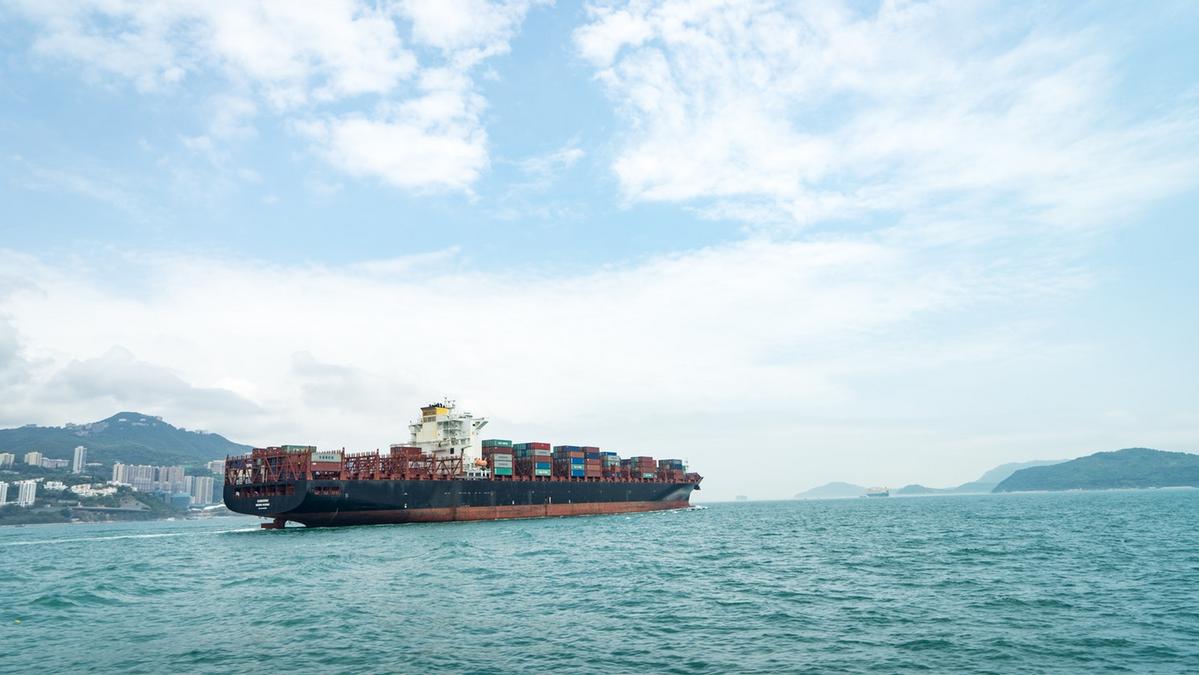Insurance BlogThursday, June 06 2019
ORLANDO, Fla. —As we all know, Congress passed the 2018 Farm Bill, legalizing hemp. The Farm Bill removes hemp from the Controlled Substances Act and allows farmers to pursue federal hemp cultivation permits, while individual states can regulate the industry within their borders as they see fit. Already, 40 states have established hemp cultivation “pilot programs” for industrial and commercial purposes, although the plant has been strictly regulated. Hemp is primarily a cheap source of CBD, which has become a hot commodity, and the passage of the Farm Bill ensures that people who farm and create products with CBD are protected from prosecution. The federal legalization of hemp would also undoubtedly attract investors and businesses from outside the U.S. The USDA’s legal opinion basically reiterated many of the changes specified in the 2018 Farm Bill. The memorandum stated that hemp has been removed from the Controlled Substances Act (CSA) and that states and Indian tribes may not prohibit the interstate transportation of lawfully marketed hemp products, although they do have regulatory control over the production of the crop within their jurisdictions. About its transportation, too many questions remain. Recently, there was a case of a great-grandmother from Tenessee entering one of Disney’s theme parks who was arrested for carrying CBD oil. Despite having in her possession a note from her doctor, certifying its medical use for her chronic arthritis condition, was arrested. She spent 12 hours in jail and was trespassed from Disney property before being released on $2,000 bail. The charges were later dropped. In airports and airlines, the industry is also getting a boost from the new TSA ruling allowing passengers to carry on all FDA-approved medical marijuana products as well as certain types of CBD. In May 31st, hemp businesses together with regulators, scientists, and other stakeholders to assist with the “process of reconciling” varying state and federal laws. For example, In Idaho, the Ada County prosecutor charged a trucker, with illegally hauling hemp from Oregon into Idaho. The USDA opinion and disagrees with this high profile case. There has also been confusion over varying state laws regulating hemp-derived CBD in food, lotions and dietary supplements, substances that have become enormously popular among consumers. Whether recent regulatory developments will impel the Ada County Idaho Prosecutor’s office to drop charges against the above-mentioned case, and two other truckers remain to be seen. Originally, hemp cultivation became illegal in the U.S. in 1937, under provisions in the Marihuana Tax Act. In the intervening eight decades, American culture has steadily warmed to the idea of reviving the agricultural commodity and its many commercial uses. The hemp-derived CBD market was estimated at $591 million in 2018, and it was expected to grow 40 times its size—to $22 billion by 2022. The rapid growth will be supported by an anticipated explosion in distribution channels for these products in the next few years. For now, it is a matter of time, when the large alphabet soup of agencies involved in the process, and that are acknowledging the legality of hemp continue to help and keep the public informed. Saturday, May 04 2019
ORLANDO, Fla. —In 1946, then President Dwight D. Eisenhower signed into law the Federal-Aid Highway Act of 1956 creating our nation’s system of interstate highways. On May 16, 1957, Congress designated the third Friday of May each year as National Defense Transportation Day, and in 1962 Congress included the whole week within which the Friday falls as National Transportation Week. Separate from the Truck Driver Appreciation Week, which is celebrated in September, the National Defense Transportation Day is a United States Federal Observance Day to recognize the importance of transportation and the people who support and protect the system in this modern era. A proclamation is signed each year by the current President of the United States. So, the third week of May is when we celebrate National Transportation Week every year. As part of National Transportation Week, events and ceremonies will be held honoring and recognizing the importance of transportation in communities across the country. Truckers are an essential part of everyday transportation for almost every industry including, retail, manufacturing, automotive, and food and dining. First-year truck drivers have the opportunity to see the country, but will also be developing their driving skills. There are both positive and negative aspects to driving a truck and in the first year of driving, each trucker is sure to become acclimated with these different situations. According to the Bureau of Labor Statistics, trucking has a higher than average rate of growth, with twenty-one percent rate of growth and millions of available jobs on the hauling market. In fact, there continues to be a driver shortage year after year. Driver’s wages are more than twice as high as the federal minimum wage and will allow most to provide for his or her family and live a comfortable lifestyle. Trucking is physically demanding and being away from family, friends, and familiar areas can be emotionally and mentally exhausting, but once drivers settle into their new life as professional drivers, the benefits can far outweigh the negatives. There are an estimated 3.5 million truck drivers in the U.S. The following important events are taking place during the month of May and you may still have time to join. The Final Mile Forum & Expo
NASSTRAC SIP-N-SHIP: CHICAGO SHIPPERS SUPPORT INFRASTRUCTURE WEEK Join NASSTRAC for a fun evening of networking with truck-loving shippers as we show support for Infrastructure Week. We will be joining more than 400 Affiliate organizations, companies, and cities that are hosting 100+ events nationwide to celebrate the 7th Annual Infrastructure Week, May 13-20. Join our kickoff! Let’s #BuildForTomorrow. Starting now. The event will be held at Redwood Logistics in downtown Chicago! Tuesday, April 02 2019
ORLANDO, Fla. —Between 2016 and 2018, major developments in logistics led to the consolidation of major shipping companies. The result is fewer shipping carrier options for shippers. It has become difficult to survive as an independent shipper with a fleet of cargo ships. So in order to compete, shipping companies have joined forces to form shipping alliances. By the end of 2019, further consolidation is considered a double-edged sword because it may mean higher rates due to less competition. However, through consolidation, shipping companies will offer top-tier customer service and increased capacity. A few important aspects reshaping the Logistics and Supply Chain Industry this year include:
There is no scarcity of challenges in this entire process of transformation, but the opportunities are there for those who dare to tap into it. Thursday, March 14 2019
ORLANDO, Fla. —As we all know, mandating the use of electronic logging devices (ELDs) was aimed ultimately at reducing accidents and improving safety, but an academic team led by Alex Scott, assistant professor of supply chain management at Northeastern University’s D’Amore-McKim School of Business, analyzed Federal Motor Carrier Safety Administration data to assess how enforcement of the ELD rule was affecting three safety-related metrics: compliance with hours of service; accident counts; and the frequency of unsafe driving. What they discovered was research that shows mixed results toward that goal so far. While HOS compliance – the primary target of the ELD mandate – improved considerably, the study found that there was no decrease in the number of accidents for independent owner-operators and carriers with small fleets. It also found that unsafe driving infractions for small companies and owner-operators actually increased relative to large asset-based carriers. Aside from safety levels, a drop in productivity as a result of the ELD mandate has been a significant issue for both large and small carriers – although there’s evidence that drivers that effectively manage their hours post-ELD have been able to generate increased profits. Although full implementation of the electronic logging device mandate is yet months away, data gleaned from currently ELD-compliant operators is already informing the Federal Motor Carrier Safety Administration’s plan to propose changes to the bedrock hours-of-service rule, stated FMCSA Ray Martinez in his upbeat address to members of the Truckload Carriers Association on March 12. When the pre-rule was issued back in August, FMCSA said it came in response to “widespread congressional, industry, and citizen concerns and seeks feedback from the public to determine if HOS revisions may alleviate unnecessary burdens placed on drivers while maintaining safety on our nation’s highways and roads.” Martinez said the agency was continuing to evaluate the comments and is “very close” to deciding whether it can “move forward with an NPRM that would provide definitive text” to launch the next phase. Recently, a Minnesota lawmaker has made good on his promise and reintroduced legislation that would exempt some truckers from Electronic Logging Device regulations. Early in February 2019, Rep. Collin Peterson had plans to reintroduce two pieces of legislation intended to provide certain truckers with relief from the Federal Motor Carrier Safety Association’s ELD regulations, especially for small trucking companies most responsible for agricultural products. The bill would mostly benefit farmers and small businesses in rural America. These bills had originally been introduced back in May of 2018, did not get enough support from other lawmakers at that time when the Speaker of the House was Paul Ryan. Given the changes in that post, a new opportunity to reintroduce the bills has now emerged and along with recent research developments, a different outcome might be possible. Both bills would still require that truck drivers use paper logs and that they comply with all of the FMCSA’s Hours of Service regulations. Monday, February 04 2019
ORLANDO, Fla.—2019 will be crucial for retailers as the automation strategies seem to be gaining ranking in their list of priorities for this year. According to Forbes Magazine last year, the fascination for automation relies upon the fact that it lowers the cost to consumers of accessing a market, so more people can afford to buy in. So, even though there are fewer jobs supporting the same amount of revenue as before, there are net the same or more jobs because consumers are buying more – there is more overall revenue. What’s holding everyone back so far? The biggest fear that as automated work requires more skills, those without those skills or access to training to gain those skills can get left behind. Would it really get rid of so many workers’ jobs or the so-called “death of the worker”? Retail is currently a business model based on low skill, low pay, high turnover labor force. With that said, as the world moves forward to automation, not only workers will need to obtain new skills and get retrained – but retailers will have to re-learn how to retain those highly skilled workers and be financially ready to sustain a different payment plan. FOR EXAMPLE —A New Model For Online Grocery Fulfillment According to the report from CommonSense Robotics, retailers like Target, Amazon, Kroger and others have invested $28 billion in e-commerce in just the last 18 months. With an annual market of nearly $800 billion, groceries are strategic hence the reason why so many companies are trying to win the grocery wars. According to CSR, retailers incur a pure loss of $5 to $15 on every manually picked online grocery order. The loss gets gets worse when the number of online orders increases. It is for that reason that moving from in-store manual picking to a dedicated facility to solely support e-commerce is a model many retailers see as the logical next step. To reduce costs and increase efficiency, CSR has perfected the use of robotics to select and retrieve the items requested by each customer. CSR recently opened its first fully automated fulfillment center which offers a stark contrast to picking orders manually. Automation is being utilized by some retailers to solve for scale and economics. However, the challenge is that most automation vendors can only enable next-day delivery propositions. Given that same-day delivery rollout increased by 500% in 2018, this seems like a solution for 2017 and not the future, according to CSR. Some believe that the optimal strategy for grocery retailers is to maximize sales per square foot inside its stores and leverage an offsite micro-fulfillment center to fulfill online grocery orders. D3 State of Retail Supply Chain report, an industry survey conducted by EyerforTransport and Quintiq— with more than 200 retailers, e-tailers and manufacturers on a range of issues, revealed that companies are less focused on forecasting capabilities and more focused on implementing automation in 2019, especially in the warehouse. Half of retailers and manufacturers reported that warehouse automation is an "advanced or immediate priority," according to the survey. Monday, February 04 2019
ORLANDO, Fla. — It is the year 2019 already and the promise for Smart Cities in the U.S. According to BW Smart Cities, about 100 cities are expected to become representative “smart-cities” by the year 2020 and be on par with smart cities across the world. Yes, that’s next year! The United Nations predicts a world population of 9.7 billion by 2050, leading to an urban population boom of 63%. Driven by the rise in global population and urbanization, smart cities are set to alter our perceptions of society as technology and big data turn cities into efficient marketplaces for essential services. The modern smart city is usually a city that has partnered with private and public enterprises and businesses to leverage technology to:
Thursday, November 29 2018
ORLANDO, Fla.—Kids around the country are eagerly expecting their gifts this Holiday Season. In their minds, Santa Claus on his sleigh goes around the world and somehow always ends up at their house and leave their Christmas wishes under the tree. And all those Tonka trucks, ugly sweaters and, electronics bought online have to get delivered to more than 126 million individual homes or apartments in the U.S. Adults, on the other hand, understand how challenging it is for Santa to complete his mission on time year-after-year. Just the fact of going shopping in super crowded commercial centers is already overwhelming, but making sure to make it before those wishes are out of stock is a killer. Most people are even unaware of the entire process behind it, even when you buy through the most convenient services like Amazon. Note they would even bring your tree to your doorstep if you want. But free shipping is never free. That’s something small businesses know all too well, still, some small businesses are making shipping cheaper to lure in customers. In an era when retail continues to undergo a massive transformation, there's no letup in shoppers demand for convenient, quick and simple. The National Retail Federation forecasts online shopping, for instance, will increase 11 to 15 percent this year, with more than $140 billion in non-store sales expected this holiday alone. According to a news report from Forbes, on average roughly every fifth present opened this Christmas will have come to you, at least partway, by air. ‘In the vast majority of cases, it continues to be far more efficient and cost-effective for companies to stock their brick-and-mortar stores using relatively old-fashioned 18-wheel trucks. That, in part, helps explain the continued – and rapid - growth of the trucking industry in recent years, and the intense stress on trucking companies to hire more drivers and put more trucks on the road. But when it comes to fulfilling 2 billion or more individual orders placed directly with manufacturers or online retailers via the internet, each requiring delivery to a distinctly different doorstep somewhere, nothing is as efficient and cost-effective as small-package delivery via air. The growth in demand for delivery – both by air and by ground services – of holiday gifts has become so profound in recent years that all of the big shippers now dismiss the notion of there being a “busiest” shipping day before Christmas as a quaint old notion.” The three logistics and delivery giants have strategies to deal with the expected increased volume in online shopping this year. UPS leased and chartered planes fleet always reaches its annual zenith in December. FedEx, in the other hand, says it expects every Monday in December except December 31 to rank at or above its current busiest day ever, Dec. 10 of last year, when it took in more than 19 million packages. Amazon is hiring third parties to supply the aircraft and in some cases the crew, the maintenance, and operations expertise and even the insurance that covers its planes. Monday, October 08 2018
ORLANDO, Fla.—Let’s talk about the importance of including Canada in the new NAFTA deal. The deal, if approved by Congress and the legislative bodies in Canada and Mexico, would take effect around 2020, before that happens, there are a number of hurdles that require clearing — and in the meantime, old NAFTA is still in effect. Perhaps most people are unaware of the importance of Canadian business to the state of Florida. Canada ranks top in visitors, ranks second in foreign investment and in exports, and ranks number three in imports to our state. Also, Canada is the #1 customer for U.S. goods and Florida benefits greatly from it. According to the Florida Chamber of Commerce 2017, Canada is the only country with those high rankings in those four important Florida economic indicators. More than 580 subsidiaries of Canadian companies call Florida home, including 81 in Hillsborough County and 25 in Pinellas. Only the United Kingdom has a bigger footprint in Florida. Last year, Florida and Canada enjoyed more than $7 billion in trade, which supported about 600,000 jobs in the state, the U.S. Census Bureau and the Canadian government reported. Much of the trade is highly integrated — companies in both places rely on each other as part of their supply chain and distribution network but not all the exports are that integrated. Florida sends far more agricultural products to Canada, especially in the winter. To give you a clear idea, Canada is the largest foreign consumer of Florida’s produce, gobbling up more than $800 million worth of oranges, strawberries, bell peppers, and other fruits and vegetables. Canada sends back a lot more meat, grains, furniture, fuel, and wood products. But on the other hand, as a true example of its integrated logistics, Canada sends organic chemicals used by Florida’s fertilizer and pharmaceutical manufacturing companies. Some strawberry seedlings begin their process in Canada, to then be turned into fruit by Florida farmers in order to sell them back to Canadians. If you don’t call this love, we don’t what you would call it! It works the same way with airplane parts. Aircraft assemblers in Florida look to Canadian parts suppliers to feed their production, while Canadian companies depend on Florida to boost their U.S. and Latin American sales. Last year, Florida and Canada enjoyed more than $7 billion in trade, which supported about 600,000 jobs in the state, the U.S. Census Bureau and the Canadian government reported. Florida sent almost $3.6 billion in exports to Canada, second only to the nearly $4.1 billion exported to Brazil, according to TradeStats Express. About 22 percent came from the Tampa Bay area. As reported on October 1st by politifact.com, the new deal allows the United States to supply the equivalent of 3.6 percent of Canada's dairy market tariff-free, up from the existing 1 percent. It also eliminates a milk ingredient pricing policy that incentivized Canadian cheese producers to use local ingredients. It also seeks to increase the number of truck parts made in North America by raising the proportion of North American parts and inputs that must be used in a car for it to qualify for duty-free treatment but that it the part of the story where Mexico also comes into play. Sunday, September 23 2018
ORLANDO, Fla.—With the sad news on how Hurricane Florence has affected the overall economy in the Carolinas, it is also important to understand how it affected the logistics of transportation in general. The storm interrupted tankers and barges that bring gasoline and diesel fuel into the area. About 62% of gas stations in Wilmington were without fuel Sept. 18. The Port of Wilmington is designated as a Foreign Trade Zone offering reduced, deferred or no import duty for the goods it handles. It is among the nation’s top 25 ports by TEU. The ports of Wilmington and Morehead City in North Carolina have reopened with restrictions to marine traffic after Florence, halting shipments of everything from fertilizer to textiles. Several major surrounding highways were flooded, limiting access to the coastal city and the port. The U.S. Coast Guard said Sept. 19 that both ports resumed service the evening of Sept. 18, with activity limited to daylight operations, among other restrictions. The port said Sept. 18 that it plans to resume truck operations Sept. 24. A number of very large companies down there have been impacted. A 2014 study showed that goods moving through Wilmington contributed about $12.9 billion annually to North Carolina’s economy while directly and indirectly supporting 73,000 jobs. In 2016, the port received nearly 1,500 ships totaling 5.4 million short tons of cargo. The biggest products it handles include nitrogenous fertilizer, pulp, and wastepaper, textile products, wheat, and gasoline, which account for about one-third of the total. The US Department of Transportation has established a Routing Assistance Hotline to support the movement of Federal, State, and local response personnel, equipment and goods during the Florence response efforts. The line is operated 24/7. The hotline number is 1-833-STORM18 (786-7618).
The following is the North Carolina Maritime Administration report on operations up to date.
Saturday, August 25 2018
ORLANDO, Fla.— The term economies of scale is very popular in the business world. It’s an economics term that describes the reduction of production costs as a result of making and selling goods in large quantities, in other words; a competitive advantage that large entities have over smaller entities. It suggests that the larger the business, non-profit or government, the lower its costs. Very often you would hear “Selling to a global market would enable us to achieve huge economies of scale.” Investors like to see a business’ sales revenue grow faster than its costs. This is what they mean by scalable or, more specifically, economies of scale. The additional costs of becoming too large are called diseconomies of scale. In the logistics and transportation world, many shippers who rely on inbound and outbound transportation to bring in raw materials and distribute their finished goods are still unaware of the many ways that transportation carriers can achieve scale balancing the act. Basic economics tend to standardize scale looking at it as just the size of the operation, overlooking four important aspects forms out of which scale can be achieved. Vehicle/container. Economies of vehicle or container size come about because the volume or carrying capacity of a truck trailer, rail car, airplane, water vessel or pipeline increases faster than the quantity of side material needed to build it. Carrying capacity, as an important source of carrier revenue, usually increases faster than the material cost involved in expanding that capacity taking into consideration that the vehicle or container can become too big to haul shipments along a given road or canal. Fleet. Economies of fleet size come about when considering how vehicles can be deployed efficiently within an interconnected market area. The cross-point offers the opportunity to interline, or exchange cargo at a warehouse. Network. Economies of network efficiency come about when the design of the system of routes allows for the fleet configuration to be diversified. Without hub airports, it is unlikely that many city-to-city combinations would be cost effective. Of course, diseconomies of scale sets in when the hub airport becomes congested due to the multitude of spoke routes and their incoming and outgoing passengers. Shipment. Economies of shipment weight and distance come about when considering all the costs that increase as a shipment’s characteristics change. If a truck trailer is at capacity and the motor carrier wants to expand operations, it must increase in increments of one trailer even if that is much more capacity than is desired. If a road is congested it must be expanded in increments of an extra lane. But, if market demand sufficiently expands then the investment in a new trailer or extra lane offers economies of scale up and until capacity is maximized again. An understanding of the opposing forces of economies and diseconomies of scale is necessary for shippers and carriers to know how to strike the right balance in their transportation planning. There is a point when average costs will actually rise as scale increases. This is known as diseconomies of scale. Getting this right to maximize your transportation strategy is a balancing act. |
Terms & Conditions | Copyright | Privacy Policy
© 2020 Florida Transportation Insurance
Insurance for Transportation Companies, Insurance for Public Transportartation, Transportation Insurance Florida









